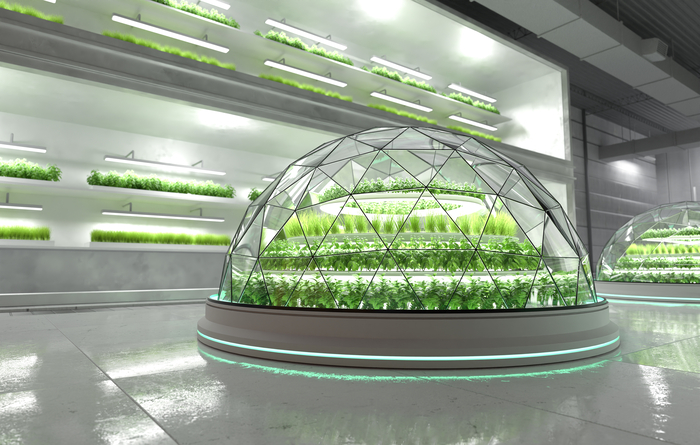
Plants are susceptible to the attack of pathogens and microorganisms that create a biofilm on it. The biofilm of microorganisms weakens the roots and stultifies the growth of plants. As the world faces growing food insecurity due to climate change, plant diseases, and other challenges, scientists are turning to innovative new technologies to boost agricultural productivity and sustainability. One promising solution that has emerged in recent years is Ag Tech nanotechnology.
Enrichment Systems Nanobubbles are microscopic gas bubbles, typically ranging from 60 to 85 nanometers in diameter, that exhibit unique physical and chemical properties. Unlike regular air bubbles, nanobubbles reach colloid suspension and remain stable in water for an extended period and have a negative surface charge that allows them to interact with and alter the properties of surrounding liquids and surfaces. Read this article further to understand the significant role of nanobubble technology in making plants disease-resistant and resilient to weather elements.
How does Ag Tech Enrichment Systems Nanotechnology Help in Sustainable Farming?
One of the key applications of Enrichment Systems patented nanobubble technology is in the realm of plant health and disease resistance. Many plant diseases are caused by the formation of biofilms – complex communities of microorganisms that adhere to plant surfaces and tissues. Biofilms are notoriously difficult to eradicate using traditional methods, as the extracellular matrix that holds the microbial cells together provides a protective barrier against antimicrobial agents.
However, research has shown that nanobubbles can be highly effective in biofilm mitigation & treatment making the plants healthier and leading to the least usage of pesticides. When Enrichment Systems nanobubbles come into contact with a biofilm, their unique properties trigger a cascade of physical and chemical changes that destabilize the biofilm structure.
Firstly, the negative charge of the nanobubbles interferes with the cell-to-cell signaling mechanisms that allow biofilm communities to form and thrive. This “quorum sensing” disruption makes it harder for microbes to coordinate their collective behavior and proliferation.
Secondly, the small size and high surface area of nanobubbles allow them to penetrate deep into the biofilm matrix, where they can directly interact with and damage the microbial cells. The gas contained within the nanobubbles can also create localized areas of oxidative stress, further compromising the integrity of the biofilm.
Finally, the buoyancy of the nanobubbles causes them to rise to the surface, physically dislodging and removing the biofilm from the plant’s surface. This “scrubbing” effect leaves the plant tissues clean and free of the protective biofilm layer.
By eliminating biofilms, Enrichment Systems patented nanobubble technology can make plants more resistant to a wide range of bacterial, fungal, and viral pathogens. Without the protective biofilm shield, these microorganisms are more vulnerable to the plant’s natural immune defenses, as well as any supplemental antimicrobial treatments that may be applied.

What Other Benefits Plants Gain from Enrichment Systems Nanobubbles?
In addition to their biofilm-disrupting capabilities, Enrichment Systems patented nanobubbles have also been shown to enhance plant growth and resilience through other mechanisms. The dissolved gases within the nanobubbles, such as oxygen and carbon dioxide, can be readily absorbed by plant roots and leaves, providing an extra boost of these essential nutrients.
Furthermore, the negatively charged nanobubbles can interact with and alter the properties of the plant’s rhizosphere – the zone of soil immediately surrounding the roots. By modifying factors like pH, water retention, and nutrient availability, growers using Enrichment Systems Ag Tech nanotechnology can create a more favorable microenvironment for root growth and nutrient uptake.
This multifaceted approach to plant health and disease resistance has garnered significant interest from the agricultural sector. Nanobubble-based products are already being deployed in various crop systems, with promising results in terms of improved yield, reduced disease incidence, and decreased reliance on traditional pesticides and fungicides; however, one of the key differences is Enrichment System’s ability to scale and operate without clogging—this is an unique property of Enrichment Systems patented Nanotechnology.
As the world continues to grapple with the challenges of feeding a growing population in the face of a changing climate, innovative technologies like Enrichment System’s nanobubbles offer a glimmer of hope. By tackling the persistent problem of biofilms and enhancing overall plant vitality, nanobubble technology has the potential to play a pivotal role in securing a more sustainable and food-secure future.





